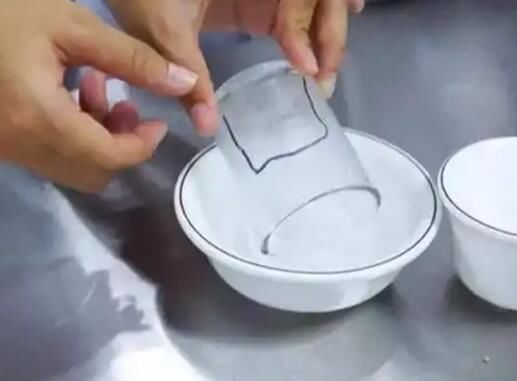Many people who go out to eat in a restaurant are used to scalding the tableware with boiling water first, thinking that such a procedure can sterilize and disinfect. So, does scalding tableware with boiling water really work?

Before answering this question, we must first know what microorganisms are generally found on tableware? The main ones include: bacteria (Staphylococcus aureus, Salmonella and Escherichia coli, etc.), viruses (hepatitis A virus, hepatitis B virus, norovirus, etc.), molds (fungi) and spores.
Staphylococcus aureus
Enterotoxins can be produced under certain conditions, which can cause symptoms of food poisoning such as nausea, vomiting, stomach cramps and diarrhea. Staphylococcus aureus is very sensitive to high temperature, at 55 ℃ temperature, 90% can be eliminated in 3 minutes. However, although Staphylococcus aureus itself is not resistant to high temperature, the toxin is very tenacious in the face of high temperature, and it is the bacterial toxin, not the bacteria itself, that causes food poisoning. So, even if most of the Staphylococcus aureus bacteria are killed, if the tableware has been contaminated with a lot of bacteria, the toxin may also be present.
Salmonella
Salmonella is the biggest cause of food poisoning in my country. Due to its widespread existence, it is easy to contaminate tableware. After infection, there will be vomiting, abdominal pain, watery stool (yellow-green), and in severe cases, chills, convulsions and even coma will occur. However, Salmonella is relatively heat-labile, and most of it can be killed in 15-30 minutes at a temperature of 55°C-60°C.
Escherichia coli
Escherichia coli is one of the bacteria that you often hear about, and it exists everywhere we live, such as in the water, in our meals, and even in our bodies. It is a normal inhabitant of the human and animal intestines and can cause acute diarrhea only in exceptional circumstances.
Escherichia coli is also not resistant to high temperature. Generally, it can be killed in 1 minute at a temperature of 75 °C.
Bacterial spores
In simple terms, it can be understood as the dormant body of bacteria. It has strong adaptability, can resist unfavorable factors such as acid and drought, and is very heat-resistant. In general, boiling water cannot kill them.
Mold
Most molds are sufficiently killed at 70-80°C, but fungal spores (dormant fungi) and toxins produced by some fungi cannot be killed at high temperatures. Therefore, once the tableware is moldy, ironing it will not solve the problem.
Virus
Viruses that may be on the tableware include norovirus, hepatitis A, hepatitis B virus, etc. Among them, norovirus is easy to eliminate, but hepatitis A and B viruses require hot water at 100°C.
The effect of ironing tableware before eating is limited
In summary, the key to killing microorganisms lies in temperature and time. High temperature and long enough time can effectively kill most microorganisms. But under normal circumstances, the water temperature provided by the restaurant is often low, and many people iron the tableware for at most ten seconds. Therefore, scalding utensils with boiling water before eating does not guarantee that most pathogenic microorganisms will be killed. If anything, the flow of water can carry away some of the bacteria, but only to a limited extent. However, although it looks terrible, if it is a restaurant that meets the hygiene standards, the microbial residues are generally qualified, and it will not cause any harm to the human body if it is not hot. If the hygiene is not up to standard, the above microorganisms may remain, which is detrimental to health.
What should I do with the utensils when I go out to eat?
1) Try to go to restaurants that meet the hygiene standards; 2) If you have children, you can bring your own tableware; 3) If you insist on ironing tableware, try to use water at 100°C for 1-3 minutes or heat at 80°C for 10 minutes. .
I usually eat at home,
Pay attention to the following points when using tableware:
1) Before the tableware is completely dry, do not stack them together, which will easily increase the growth of bacteria; 2) Regularly disinfect and sterilize the tableware; 3) “Boil disinfection” method: put the tableware in boiling water and boil 5-10 minutes; 4) “Steam sterilization” method: Put the tableware in the steam cabinet, adjust the temperature to 100°C, and sterilize for 5-10 minutes.
How to prevent the growth of bacteria in life?
1) Before making food, you should fully clean your hands, especially the inside of your nails; 2) When you have rhinitis or eye infection, try not to make food; 3) When there is a wound on your hand, do not make or touch food ; 4) Keep the kitchen and dining area clean and hygienic; 5) If the prepared food needs to be stored for more than 6 hours, it should be refrigerated in the refrigerator below 4 ℃ as soon as possible; 6) Do not use dishcloths as “universal cloths”;
According to the survey, the total number of bacteria per gram of tablecloth is as high as hundreds of thousands, including pathogenic bacteria such as Escherichia coli and Salmonella, so try not to wipe the tableware with a rag.
(Science China)